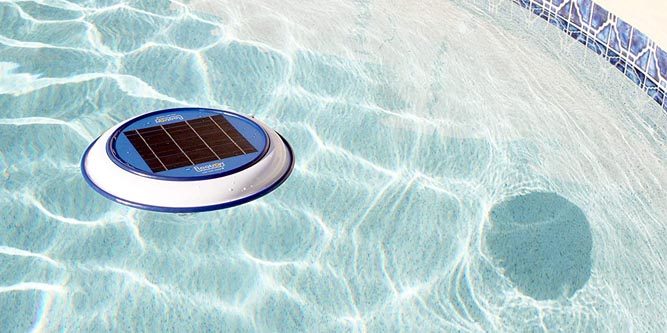Pool ionizers are really neat! This will take you back to chemistry class, so get ready. So you remember what an ion is right? Well if not that’s ok, we will break it down here.
An ion is basically an atom that carries a charge. In the case of swimming pools copper and silver ions are the weapon of choice to fight algae and some bacteria respectively. However, don’t fall into the trap of thinking that you only need an ionizer for clean water, that’s not the case.
You always need a residual amount of chlorine or bromine to handle the pathogens that aren’t susceptible to an inozier. This is where Sutro, our pool monitor, can help you keep your water clean and clear by testing your pH and free chlorine or bromine 3x/day and your alkalinity once per day.
By keeping an eye on your sanitizer level you can rest assured that your ionizer is getting the help that it needs. Let’s look at the types of ionizers and their use.
Pool Ionizer types
Before we talk about the types of ionizers it’s important to make a distinction between ionizers and mineral systems as people often get them confused. Ionizers actually use electricity to break copper and/or silver into ions and mineral systems bring their own ions. So let’s talk about ionizer systems that use electricity.
Ionizer systems can be built into your plumbing system or can be free floating. The type that’s plumbed into your pool circulation system uses electricity from your panel to break the ions and as the water passes through the ionizer it takes the charged ions into the pool where they can attach to the walls of microorganisms and make them vulnerable to your sanitizer.
Remember, ions alone can’t effectively kill microorganisms, they need the help of a sanitizer like chlorine or bromine.
Another way to deliver ions to your water is to use a solar pool ionizer. It works the same way as a built in ionizer but it uses solar power and it floats in your pool. Now right away you should be thinking about what happens when the sun is not out, and yes you got it.

